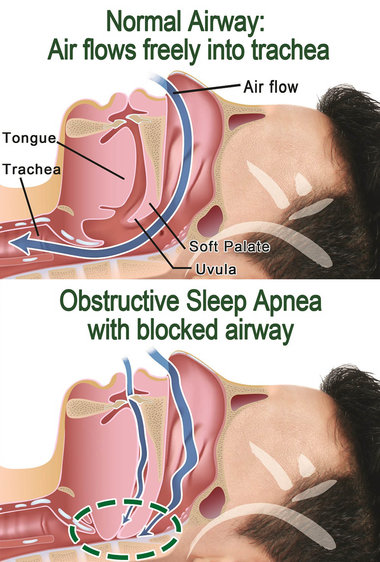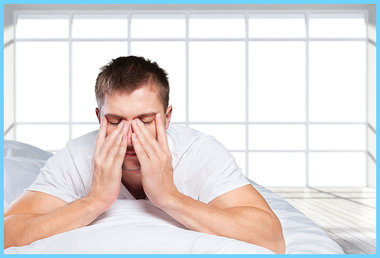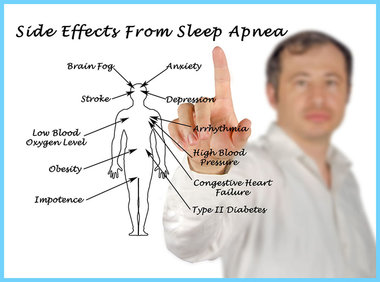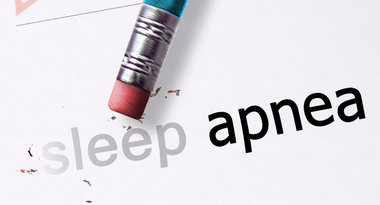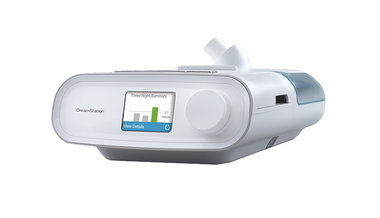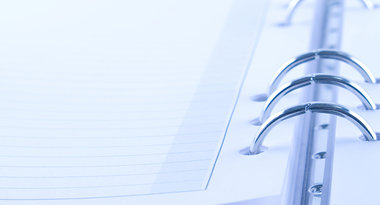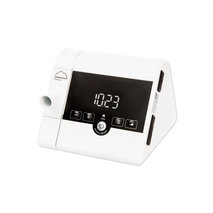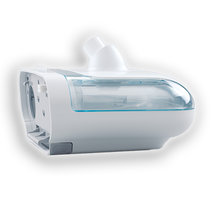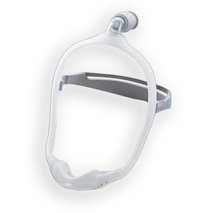Sleep Apnea
OpenBreastfeeding
OpenBreastfeeding
OpenUseful Information for Mothers
Open- Medela 2 Phase Expression
- Hygiene During Pumping Breastmilk
- Latching On in Cross-Cradle Position
- Latching On in Side-lying Position
- Latching On in Cradle Position
- Latching On in Clutch Position
- How to Choose the Right PersonalFit Breastshield?
- How to Choose the Size of Comfy Bra & Easy Expression Bustier?
Breastfeed After Work
Open
What is
sleep apnea
and CPAP?
The most obvious symptom of Sleep Apnea is loud snoring.
Estimated 80% of sleep apnea sufferers are unaware that they suffer from OSA, and therefore are untreated(1).
What is Sleep Apnea?
Sleep Apnea is one of the most common kinds of sleep disorders. People suffering from Sleep Apnea would have their airway being blocked, and stop breathing during sleep. Such events can happen hundreds of times during sleep and each event may last for a few seconds to a few minutes(2). This causes lowering of oxygen saturation in blood, frequent awakenings and poor sleep quality.
There are 3 types of sleep apnea:
Obstructive Sleep Apnea (OSA):
During normal breathing, the airway is clear and open, allowing air to flow freely in and out of the lungs. OSA is the most common type of sleep apnea. It occurs when tissues in the throat collapse and block the air flow in and out of the lungs during sleep.
Central Sleep Apnea (CSA):
CSA is resulted as the central nerve system fails to give proper breathing signals to drive the respiratory efforts.
Mixed Sleep Apnea (MSA)
MSA is a combination of OSA & CSA.
Apnea-Hypnea Index (AHI)
The AHI is calculated by dividing the number of apnea events by the number of hours of sleep. The AHI values are categorized as:
| Level of Severity | AHI |
|---|---|
| Normal: |
(AHI : <5 /hour) |
| Mild: | (AHI : 5-15 /hour) |
| Moderate: | (AHI : 16-30 /hour) |
| Severe: |
(AHI : >30 /hour) |
How to choose your CPAP Device and mask?
Each individual has different facial contour and personal preference, put on the mask and CPAP to try them in person is vital on selecting your medical device. Avoid to purchase any medical device online by viewing on photos only.
Whatsapp us for free trial:Cheung Sha Wan / Mongkok / Central / Causeway Bay / Shatin / Yuen Long / Macau. Welcome to visit us, email or call 2332 3366
What are the characteristics of high risk group?
If you have more than one of the following characters, you should consult with a physician soonest.
1) Male 2) obesity 3) Neck circumference is larger than an average person
4) irregular thyroid gland excretion
5) The nasal septum is curved, the nasal bones are displaced
6) short chin
7) suffering from endocrine diseases, such as: hypothyroidism
8) Alcoholic, smoking 9) Taking tranquilizers, sleeping pills
What are the symptoms and causes of high risk group?
If you have more than one of the below symptoms, you should consult with a physician immediately.
The main symptoms of sleep apnea are :
- Snoring, interrupted by pauses in breathing
- Loss of energy, fatigue
- Morning headache
- Excessive daytime sleepiness
- Loss of concentration, slow in response
- Irritability
- Deteriorating memory
- Reduced libido
What are the risks of going untreated?
Clinical studies indicate that sleep apnea leads to oxygen de-saturation. Prolonged oxygen deficiency can result in damage in many organs and increase the risk of developing:
- Stroke(4): OSA is associated with an increased risk of stroke in middle-aged and older adults, especially men.
- Cardiovascular disease(5) : OSA can lead to Arrhythmia and slower heartbeat.
- Hypertension(3)(5): 30% of hypertensive people have OSA and 50% of people suffering from OSA have hypertension.
- Heart failure(5)(6): Doubled the risk of having a heart attack. In fact, 70% of patients admitted to hospital for coronary artery disease were found to have sleep apnea.
- Type 2 diabetes(6) (7): 40% of people with OSA have type 2 diabetes as confirmed by medical research.
- Fatigue-related vehicle accidents(7) : 6 times more likely to have a car accident.
What is Home Sleep Test and Self-access?
What should you do in case of suspecting sleep apnea?
Step 1: Do a simple “Stop-Bang” online test, to pre-screening your chance of having sleep apnea.
Step 2: If the result shows that your may be suffering from sleep apnea, please consult a physician to see if a sleep test is needed. Sleep test has no pain and no risk.
Step 3: A one night home sleep test would help you to better understand your situation.
Step 4: After Celki’s RPSGT sleep specialist write the sleep report, it will be sent to a physician for interpretation.
Step 5: If diagnosed with sleep apnea, your physician may treat you with CPAP device.
How to do a Home Sleep Test?
Sleep test has no risk and no pain. Most people prefer to do the sleep test at home in their familiar home environment, also they do not need to travel to the hospital. It only takes one night to complete the test, hence you can go to work as usual in the morning.
During sleep test, Celki technician will visit your home at night, groups of sensors will be attached to your body to measure different sleep parameters. The following data would be included in a sleep study:
- Electroencephalogram (EEG)
- Electrocardiogram (ECG)
- Electromyogram (EMG)
- Electroculogram (EOG)
- Snoring Sound
- Body Position
- Oral Nasal Flow
- Leg Movement
- Chest, Abdominal Effort
- Oxygen Saturation Level (SaO2)
Therapeutic Options
According to your sleep apnea severity, physicians will provide you with several treatment options, the most common options is CPAP(Continuous Positive Airway Pressure. However, you may be required to do a CPAP titration in order to find the optimal pressure
There are several mainstream treatment options:
CPAP(Continuous Positive Airway Pressure)
CPAP is a medical device which delivers air pressure to nasal cavity by a mask to prevent the upper airway from collapsing, allows the user to resume normal breathing. CPAP is the most effective and common way to treat OSA, suitable for mild to severe sleep apnea patient. User would feel refreshed the next morning.
Fixed CPAP
It is the basic and most economic type of CPAP, it delivers a fixed air pressure to clear the airway.
Auto CPAP can sense every breath of the user, and adjusts the air pressure and rhythm automatically to suit the user. During airway blockage, it will automatically increase the air pressure to open up the airway. When the airway resume a clear passage, the Auto CPAP will lower the air pressure to reduce the discomfort. Consequently this higher-end Auto CPAP is more comfortable than the Fixed CPAP.
BiPAP (Bi-level Positive Airway Pressure)
BiPAP is a bi-level positive airway pressure system that delivers two different positive pressure levels. It keeps the upper airway from collapsing by putting higher pressurized air during inspiration and helps users exhale by putting lower pressurized air, this also facilitates the removal of carbon dioxide from the lungs. The BiPAP has the maximum comfort in usage.
Other options
1) Oral appliance: User will use the oral appliance during sleep to pull the jaw forward, however; this only suits for mild OSA.
2) Surgery: An invasive way treatment, mainly for severe patients, but it may not suit everyone, and it is not the first therapeutic choice.
3) Modification of the life style: Do more exercises, reduce weight for obese person, sleep laterally, stop using sleeping tablets or sedatives, and avoid taking alcoholic drinking before sleep.
Reference:
(1) Obstructive Sleep Apnea – A guide for GP’s – British Lung Foundation (NHS).
(2) Rules for Scoring Respirator Events in Sleep: Update of the 2007 ASSM Manual for Scoring of Sleep and Associated Events - Journal of Clinical Sleep Medicine, Vol. 8, No. 5, 2012.
(3) Patient information series – Seep Mini series #4, Obstructive sleep apnea and heart disease, American Thoraic society.
(4) Logan et al. High prevalence of unrecognized sleep apnoea in drug-resistant hypertension. J. Hypertension. 2001.
(5) Marin, J.M., Carrizo, S.J., Vicente, E., & Agusti, A.G. (2005). Long-term cardiovascular outcomes in men with obstructive sleep apnoea-hypopnoea with or without treatment with continuous positive airway pressure: an observational study The Lance, 365(9464), 1046-53.
(6) Einhorn et al. Prevalence of sleep apnea in a Population of Adults With Type 2 Diabetes Mellitus. Endocr. Pract. 2007; 13(4): 355- 362.
(7) Teran-Santos J., Jimenez-Gomez A., &Cordero-Guevara. J. (1999). The association between sleep apnea and the risk of traffic accidents. N Engl J Med., 340 (11), 881-3.


